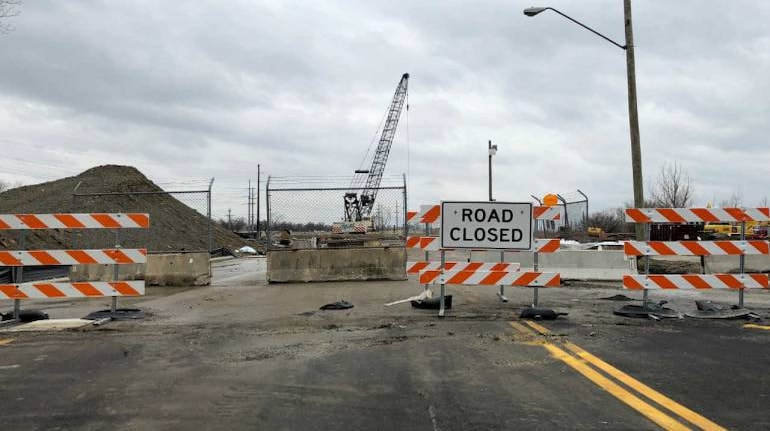



As part of its plans to generate revenue from assets worth Rs 1.6 lakh crore in the next four years, the National Highways Authority of India (NHAI) is looking to come out with more tenders under the build-operate-transfer (BOT) model, which can be then monetized after two years, senior NHAI officials told Moneycontrol.
In the current financial year, NHAI had initially planned to award 450 km of road projects through the BOT model but is likely to exceed its set target, one company official said, with 15-20 percent of total projects being under this mode in 2022-23.
As part of its plans, NHAI is looking to bid out around 600-1,000 km highway stretches in 2022-23 through the BOT model after seeing renewed interest from investors in 2021-22, sources said.
In 2021-22, BOT projects made up less than 10 percent of all projects awarded, with engineering, procurement and construction (EPC) contracts and the hybrid annuity model (HAM) projects accounting for the most.
Increased interest from private playersNHAI has seen keen participation from private players in the few BOT projects it has bid out in 2021-22. In March, it had offered two projects worth around Rs 4,000 crore in West Bengal and received more than six bids, unlike previous years where there would be only a couple of bids, officials said.
Also, private highway developers did not demand viability gap funding and were even ready to pay a premium to the government for the projects.
One of these projects was awarded to IRB Infrastructure for around Rs 2,193 crore while Adani Enterprises bagged the other project for Rs 2,021 crore.
Why is the NHAI confident about BOT projects again?After 2012, highways development came to a grinding halt as developers were unwilling to take funding and traffic risks that the BOT model posed due to policy paralysis, delays in land acquisition and other contractual issues.
NHAI had gone slow in giving out BOT projects for nearly a decade till 2019 and had come out with no new BOT offers in 2018-19 and 2019-20, due to falling private investor interests in these projects due to delayed returns on investment, rigid concessionaire agreements and legal disputes with the government.
Moreover, the gestation period was long and the upside for private players was low under the earlier regulations governing BOT projects.
However, in November 2019, before the outbreak of the COVID-19 pandemic, the Cabinet Committee of Economic Affairs amended NHAI’s BOT model to make it more attractive for private investors.
As a part of the changes, public-funded projects—EPC and BOT—that are operational for more than a year after beginning commercial operations were allowed to be monetized through the TOT or toll-operate-transfer model. Earlier, such projects had to be operational for at least two years before they could be monetized.
Rating company ICRA estimates that operational BOT road assets worth Rs 20,700 crore will be available with NHAI for monetization in the next four years.
NHAI officials said that with the changes in the BOT model and the recovery of the construction industry from the outbreak of COVID-19, it will now bid out more BOT projects.
According to an NHAI official, interest in BOT projects should get a further boost with the government's latest reforms in deciding bidders for new projects and new amendments in the General Financial Rules (GFR)that allow construction contractors to get an upfront payment of 75 percent of the project cost.
“Earlier a number of BOT projects would be delayed or cancelled due to aggressive bids by some private players, but now with the new system for bidding out projects, those issues are likely to be resolved,” the official said.
The department of expenditure’s public procurement division on October 29 issued guidelines allowing all non-standard works and non-consultancy services to be bid out under the quality-cum-cost-based selection method.
As per the revised guidelines, the L1 or least-cost selection method will no longer be the only criterion for selecting bidders. So far, L1 was used by ministries, public agencies, and public sector undertakings (PSUs) to pick companies to perform routine or standard works and non-consultancy services like audit and designing plans for non-complex works.
Earlier this week the Union government also amended the GFR, allowing government departments and agencies to pay 75 percent of the arbitral amount to contractors in the construction sector against bank guarantees in cases where the entities have challenged the arbitration awards.
The move is expected to address cash flow problems being faced by contractors and have resulted in delays in several infrastructure projects. The release of funds would not only help speed up work on existing projects but will also allow the deployment of funds in newer projects.
Shaneen Parikh, partner, and head, international arbitration at law firm Cyril Amarchand Mangaldas, said, “This measure will improve liquidity in the construction sector by ensuring that contractors are not cash-strapped through lengthy challenges to awards by PSUs. By mandating the provision of bank guarantees against receipt of 75 percent of the award amount, the government undertaking is secured in case of a successful outcome.”
Discover the latest Business News, Sensex, and Nifty updates. Obtain Personal Finance insights, tax queries, and expert opinions on Moneycontrol or download the Moneycontrol App to stay updated!
Find the best of Al News in one place, specially curated for you every weekend.
Stay on top of the latest tech trends and biggest startup news.